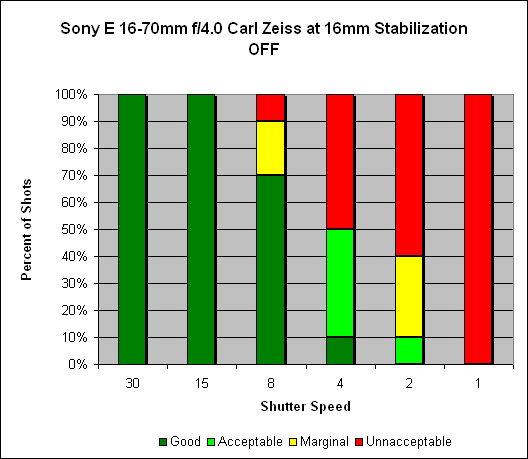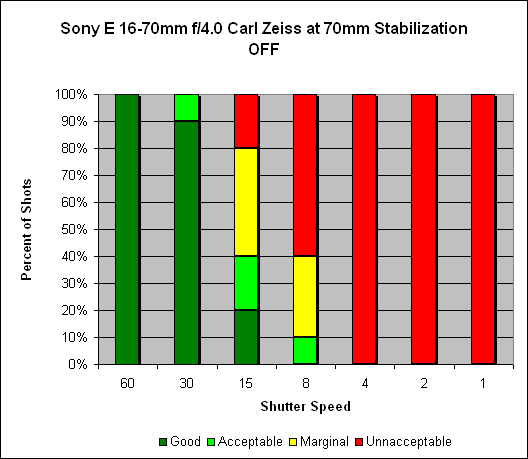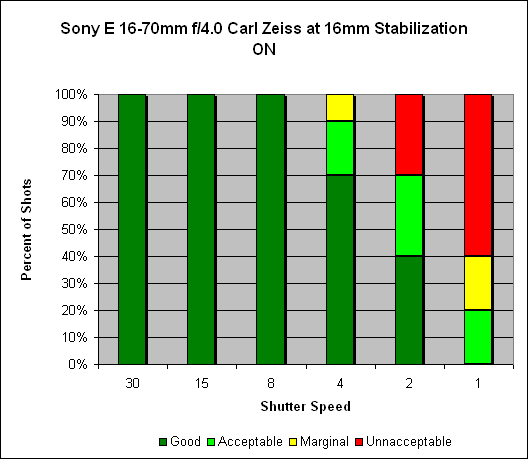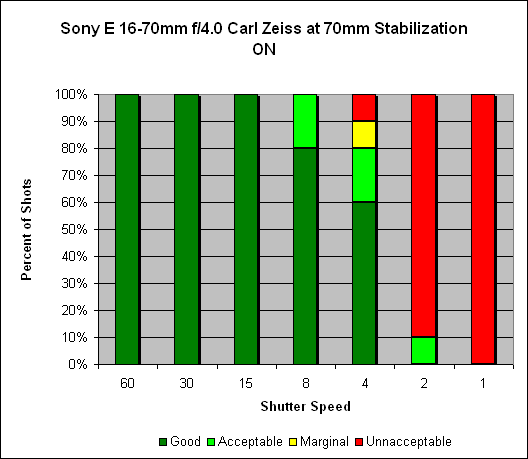Most people tend to think of image stabilization as being mainly for telephoto lenses. While it's true that their longer focal lengths tend to magnify the effects of camera shake, image stabilization can proved a very useful assist at wider angle focal lengths as well; anyone who's ever tried to blur the image of a waterfall, while keeping the surrounding landsape tack-sharp knows exactly what I'm talking about.
At 16mm, we see about 2 stops of compensation.
 |
| Mouse over this chart to show results with IS activated. |
Zoomed in to 70mm, we see 3 stops of compensation.
 |
| Mouse over this chart to show results with IS activated. |
The image stabilization on the Sony 16-70mm lens worked well, especially at full telephoto, which provided around 3 stops of stabilization. At the wide end, the Optical SteadyShot system was less effective, with about 2 stops of compensation. For stills shooting this isn't a severe drawback as the shorter focal lengths will allow for slower shutter speeds without noticeable camera shake.
IS systems tend to provide more benefit to less-stable shooters than very steady ones, so most users will see the same or greater amounts of shake reduction as we measured here. You can read more about our IS test methodology here: SLRgear IS Test Methodology, v2.

